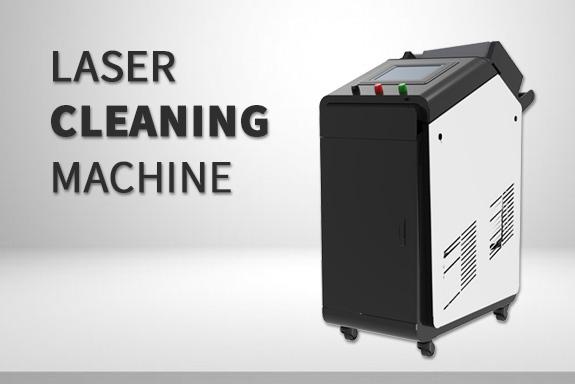Introduction to Laser Rust Removal
Laser rust removal represents a cutting-edge solution in the field of industrial maintenance and restoration. This technology uses focused laser beams to eliminate rust and other contaminants from metal surfaces, offering a precise and effective alternative to traditional rust removal methods. Laser rust removal provides numerous benefits, including improved efficiency, environmental safety, and the preservation of the underlying material. Understanding how this technology works and its various applications can help you leverage its advantages for your specific needs.
How Laser Rust Removal Works
Laser rust removal utilizes high-intensity laser beams to target and vaporize rust and corrosion from metal surfaces. The process involves directing a laser beam at the rusted area, where the energy from the laser causes the rust to evaporate or be blown away by the force of the laser's impact. This method is highly efficient because it focuses solely on the rust, leaving the underlying metal intact and unaffected. The precision of laser rust removal makes it an ideal choice for delicate or valuable components where preserving the base material is crucial.
Advantages of Laser Rust Removal
Laser rust removal offers several notable advantages over conventional rust stripping techniques. One of the primary benefits is its precision; laser technology allows for the selective removal of rust without affecting the surrounding material. This precision reduces the risk of damaging the metal and ensures that only the rust is removed. Additionally, laser rust removal is an environmentally friendly process, as it eliminates the need for chemical rust removers and minimizes waste. The speed and efficiency of laser rust cleaning also contribute to reduced downtime and increased productivity in industrial settings.
Comparing Laser Rust Removal to Traditional Methods
Traditional rust removal methods, such as sandblasting or chemical treatments, often involve abrasive materials or harsh chemicals that can damage the underlying metal or pose environmental hazards. In contrast, laser rust removal is a non-contact method that focuses on the rust itself, minimizing damage to the metal and eliminating the need for potentially harmful chemicals. While traditional methods may be suitable for some applications, laser rust removal provides a cleaner, more controlled approach that is particularly beneficial for sensitive or high-value components.
Applications of Laser Rust Removal
Laser rust removal technology finds applications across various industries, including manufacturing, automotive, aerospace, and historical restoration. In manufacturing, it is used to clean and maintain machinery and equipment, ensuring optimal performance and longevity. The automotive industry utilizes laser rust cleaning to prepare parts for painting or repair, while the aerospace sector relies on it to maintain the integrity of critical components. Historical restoration projects benefit from laser rust stripping because it allows for careful cleaning of artifacts and structures without damaging their historical value.
Choosing the Right Laser Rust Removal Equipment
Selecting the appropriate laser rust removal equipment involves considering several factors, including laser power, beam quality, and machine configuration. Higher power lasers are generally required for more extensive rust removal tasks or for larger surfaces. The quality of the laser beam impacts the precision and efficiency of the process, so choosing equipment with a high-quality beam is crucial for achieving optimal results. Additionally, the configuration of the laser cleaning machine should match the specific requirements of your application, such as portability or integration with existing systems.
Maintenance and Care of Laser Rust Removal Equipment
Proper maintenance of laser rust removal equipment is essential to ensure its longevity and performance. Regular cleaning of the laser lens and mirrors is necessary to maintain optimal beam quality and prevent reduced efficiency. Periodic checks of mechanical components, such as motors and drives, help prevent potential issues and ensure smooth operation. Following the manufacturer's maintenance guidelines and addressing any issues promptly can extend the life of your laser cleaning machine and maintain its effectiveness in rust removal tasks.
Advanced Techniques in Laser Rust Removal
Advancements in laser technology continue to enhance the capabilities of laser rust removal. Techniques such as pulsed laser cleaning, which uses short bursts of laser energy, can improve efficiency and precision in rust removal. Additionally, the integration of automated systems and robotics can streamline the cleaning process, increasing productivity and reducing manual labor. Exploring these advanced techniques can provide additional benefits and help you stay at the forefront of laser rust removal technology.
Environmental and Safety Considerations
Laser rust removal is generally considered an environmentally friendly method compared to traditional rust removal techniques. It reduces the need for hazardous chemicals and minimizes waste production. However, safety precautions are still important. Proper ventilation and protective equipment should be used to safeguard operators from potential laser hazards. Ensuring that safety protocols are followed helps create a safe working environment and protects both operators and equipment.
Conclusion
Laser rust removal is a revolutionary technology that offers precision, efficiency, and environmental benefits over traditional rust removal methods. By understanding the operation, advantages, and applications of laser rust cleaning, you can effectively utilize this technology for a range of industrial and restoration tasks. Whether you are involved in manufacturing, automotive maintenance, or historical preservation, the benefits of laser rust removal make it a valuable tool for achieving high-quality results and maintaining the integrity of metal surfaces.

